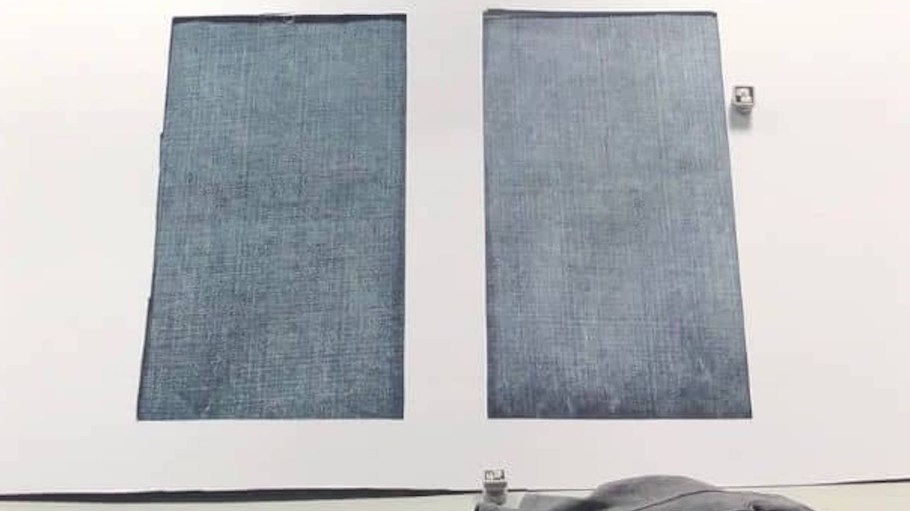
Category: FABRICS
Country: United States
Traditional denim samples (left) presented alongside their digitally printed counterparts (right). Ming Wang
By Liz Warren November 3, 2021 2:56 PM
The quest for a denim fabric with the lowest environmental impact continues.
This time, researchers from North Carolina State University are experimenting with digitally printed cotton that mimics the look of denim. Researchers recently published their findings in the Journal of Imaging, Science and Technology explaining their process for saving time, energy and money in denim dyeing.
Using a high-resolution scanner to copy an image of the jean samples, they then transferred the image to a computer file with color and transparency information. From there, they chose a pre-treated fabric with the same weight and texture as the traditional jean samples and printed a series of six different washes onto cotton fabric.
The finished products were then presented alongside their traditional denim sample counterparts to a panel of 12 experts well-versed on the global denim supply chain for inspection.
While most of the experts rated the color match to be a three or above (on a scale of one to five, with five being an exact match) on select styles, other categories received a lower score. According to the study’s lead author Ming Wang, the challenge lies in achieving a similar line quality and texture to traditional denim. Wang attributed the disconnect to the surface-level penetration that digital printing provides, whereas traditional dyeing permeates much deeper.
“If someone could solve the ink penetration problem, I think we could mass produce denim products with a high-speed printer,” he told the North Carolina State University newspaper, adding that doing so could help lower the cost of production. By eliminating some of the steps in the coloration process and having access to unlimited colors, efficiency increases and pricing decreases. A traditional process not only requires more steps, but it also requires an added cost for each color used. Digital dyeing, on the other hand, provides access to 200 colors all for the same price, researchers noted.
Though still in the development stage, the innovation has potential to translate to big environmental savings because of its significant water- and chemical-saving benefits. Standard dye processes can use anywhere from 13 to 26 gallons of water per jean, according to researchers at the University of Georgia, who also experimented with water-saving dye methods and developed a solution of their own. In September, they published a study detailing a new indigo dyeing technology that reduces the use of harmful chemicals while simultaneously boosting efficiency. Though conventional denim dyeing methods involve reducing indigo with toxic chemicals prior to dyeing, their innovation completely eliminates the use of harmful chemicals by mixing it with nanocellulose fibrils—wood pulp—and depositing it on the surface of the textile, essentially gluing the color in place.
With more work ahead of them, North Carolina State University researchers say their next focus will be on developing new technologies that speed up the production cycle to get goods to consumers faster.
Courtesy:
https://sourcingjournal.com/denim/denim-sustainability/digital-printing-denim-dyeing-research-north-carolina-state-university-311359/
Copyrights © 2025 GLOBAL TEXTILE SOURCE. All rights reserved.